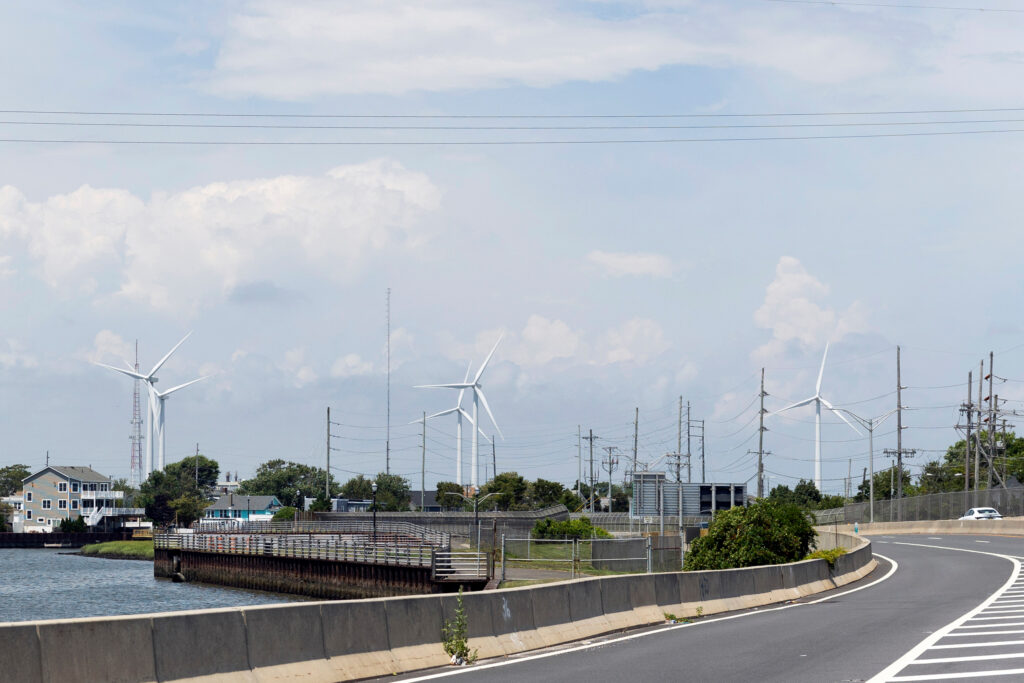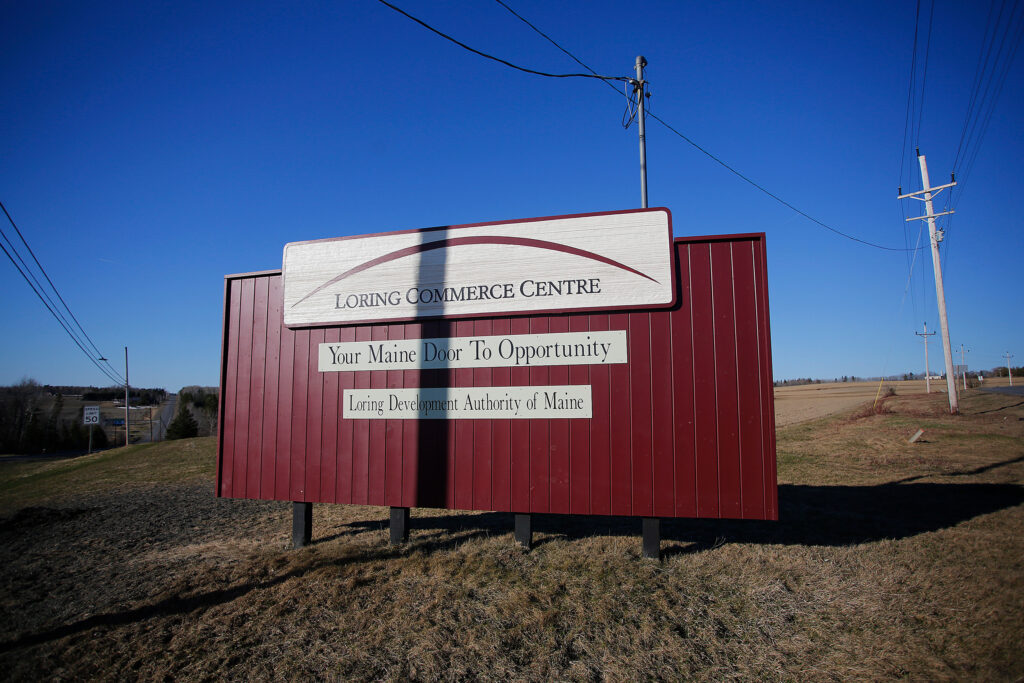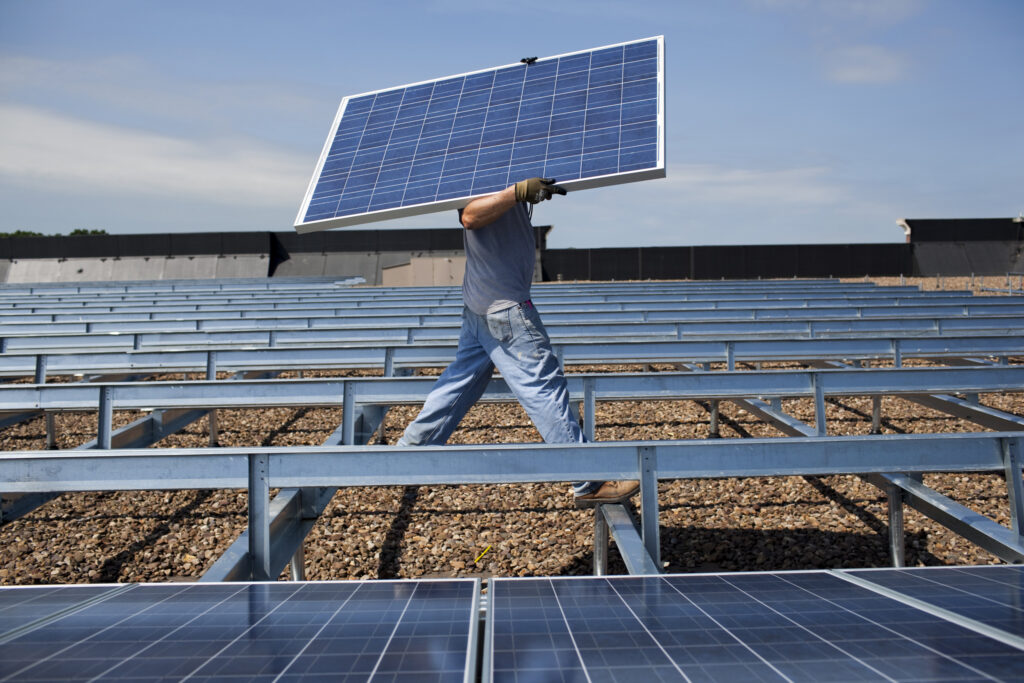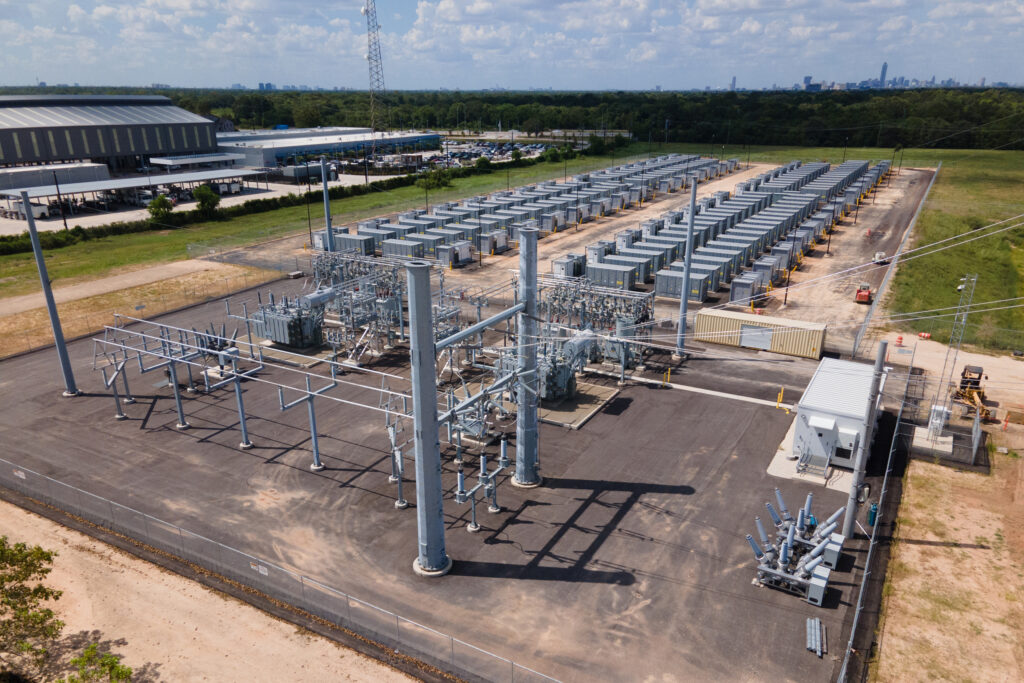Texas widened its lead as the country’s renewable energy leader in 2024, with growth in solar and wind power, according to federal data.
Solar and wind also grew nationwide at the same time that coal continued on a long-term decline. Natural gas had a small increase and remains way out in front as the country’s top fuel for producing electricity.
The U.S. Energy Information Administration released electricity generation data last week for December 2024, which means we now have a full picture for the year. Despite fears that this information would be taken down as part of the Trump administration’s reductions in public access to government data, the numbers are here and they tell many stories about how our electricity mix is evolving.
We’re hiring!
Please take a look at the new openings in our newsroom.
See jobs
First, the topline: U.S. power plants generated 4.3 million gigawatt-hours in 2024, an increase of 2.9 percent from the prior year. That’s a large increase, but within the bounds of normal. Since 2010, the annual percentage increase has been more than 2 percent three other times; the highest was 3.6 percent in 2018.
The numbers are preliminary and could be revised.
Natural gas power plants generated 43.3 percent of the country’s electricity last year, up from 43.2 percent in 2023. Utility-scale renewables, which include wind, utility-scale solar and hydropower, among others, were 22.7 percent, up from 21.4 percent. Nuclear was 18.2 percent, down from 18.5 percent. And coal was 15.2 percent, down from 16.1 percent. That leaves less than 1 percent of “other,” which mainly includes oil and other petroleum-based fuels.

The growth in utility-scale generation from renewables was mostly driven by solar, followed by wind. Wind energy bounced back from a down year in 2023 in which unusual weather patterns led to a reduction in wind speeds.
Wind is the leading source of renewable electricity with 453,454 gigawatt-hours, up 7.7 percent from the prior year. Hydropower plants generated 242,226 gigawatt-hours, down 1.1 percent. Utility-scale solar generated 215,416 gigawatt-hours, up 32 percent.
Small-scale solar, which includes systems with 1 megawatt of capacity or less, generated 84,630 megawatt-hours, up 15.3 percent. Small-scale solar is not a utility-scale resource, so it’s not included in the national total for utility-scale generation.
Geothermal and biomass, which are smaller renewable sources, each had small decreases.


“All the trends that we’ve been seeing that have happened for a long time are continuing,” said Ric O’Connell, executive director of GridLab, a nonprofit that does technical analysis for regulators and renewable power advocates. “Wind and solar are continuing to provide a larger share. Coal is continuing to decline.”
Texas Dominates
It is not new to see Texas at the top of rankings for U.S. electricity generation. The state has long been the leader in generation from coal and natural gas, and has also been the leader in renewables for more than a decade.
Texas’ dominance in renewable energy started with the growth of wind farms in the late 2000s and early 2010s. In recent years, Texas has become a leader in utility-scale solar, trailing only California in generation from this resource.
The numbers are remarkable. Texas generated 169,442 gigawatt-hours from wind, utility-scale solar and small-scale solar in 2024, which is significantly more than the runner-up, California, which generated 92,316 gigawatt-hours from those resources.
Iowa ranks a distant third, as it did in 2023, thanks almost entirely to wind power.
Texas has its own electricity grid, run by the Electric Reliability Council of Texas, and a market that requires owners of power plants to compete on price. This is different from most of the country, where power plants have guaranteed profits under state regulation.


Texas also is friendly to developers in terms of obtaining permits to build projects and connect to the grid. This, too, is different from most of the country, where developers often need to work through years of obstacles from local governments, state regulators and regional grid operators.
“Texas is the most innovative, most interesting market, and clean energy is thriving because it makes sense economically,” O’Connell said.
Some Texas lawmakers would like to make it more difficult to build renewable energy and energy storage in the state, which is in part to stifle a competitor of oil and gas.
This wouldn’t make much sense in terms of building the economy or having a reliable electricity grid. If Texas’ leaders can just stay out of their own way, the state is on track to dominate the renewable energy economy for generations to come.
Wind Improves but Concerns Remain
The wind energy industry is having a rough time. On Inauguration Day, President Donald Trump issued an executive order halting new permits for offshore wind, and he has shown hostility for onshore and offshore wind projects in various phases of development.
But the industry had many problems even before Trump took office in January. Development of onshore wind farms has slowed in recent years due to a variety of factors, including an increase in local opposition and a shift by developers to focus more on building utility-scale solar.
“The current state of wind energy in America should be raising alarm bells for anyone who wants to see this country decarbonize its economy.”
— Michael Thomas, Cleanview
In 2023, electricity generation from wind farms decreased compared to the prior year due to a combination of few new projects coming online and unusual weather patterns that reduced wind speeds in much of the country.
Considering how bad 2023 was for wind energy, 2024 looks like a bounceback year, with an increase in generation and an increase in wind’s share of overall generation. But the growth was small.
Cleanview, a research firm, has raised concerns about the slow growth of wind energy, noting several years of shrinkage in the amount of new wind energy capacity coming online. This is in contrast to utility-scale solar and battery storage, which have steadily grown.
“The current state of wind energy in America should be raising alarm bells for anyone who wants to see this country decarbonize its economy,” said Michael Thomas, founder of Cleanview, in an email. “There is no model that I’m aware of that has America meeting its climate targets without significant wind growth. And yet for the last four years wind capacity additions have actually fallen.”
Coal Is Down, Nuclear Is Flat
The decline of coal power may be the least surprising part of the 2024 data. Coal-fired power plants continue to close, largely because they are more expensive to operate than alternatives.
In 2014, the country had about 300 gigawatts of generating capacity from coal-fired power plants, and those plants were being utilized at about 60 percent of their maximum capability. Last year, capacity was about 175 gigawatts, and utilization was 43 percent.
Nuclear is a different story. The federal government under President Joe Biden and now under Trump has pumped money into development of next-generation nuclear reactors.
This story is funded by readers like you.
Our nonprofit newsroom provides award-winning climate coverage free of charge and advertising. We rely on donations from readers like you to keep going. Please donate now to support our work.
Donate Now
Despite a lot of investment and talk of a bright future, nuclear power was essentially flat in 2024. Electricity generation from nuclear power plants increased by about 1 percent, but that wasn’t enough to increase nuclear’s share of the U.S. total because the overall pie grew by much more.
Nuclear is an important part of the country’s, and the world’s, shift away from fossil fuels. But EIA lists no nuclear plants among the new power plants that are planned to come online in the next few years. Get ready for a lot of spending and waiting.
Free, Accessible Data Is Good
Almost everything I’ve written today comes from databases maintained by the Energy Information Administration, part of the U.S. Department of Energy.
The Trump administration has cut off access to some government data, but EIA’s vast resources continue to be available to energy companies, regulators, the media and anyone else.
I spoke with someone at EIA who said no data has been pulled down and there are no plans to change data availability.
“One of the things that’s so powerful about the American energy industry is that we have all this transparency and the availability of data,” O’Connell said.
Without this data, “it’s going to reduce innovation,” he said. It will mean that large companies will have a competitive advantage because they can afford to pay private research firms for data, while smaller companies will suffer.
I’m pleased that EIA data remains available as of this moment, and I hope it stays that way.
Other stories about the energy transition to take note of this week:
Europe’s Largest Utility to Cease New U.S. Renewables Projects: Iberdrola, a utility based in Spain, has said it will not begin any renewable energy projects in the United States this year, as Pietro Lombardi reports for Reuters. The company’s executive chairman said its decision is part of a larger strategic shift to focus on building and upgrading electricity grids, and unrelated to U.S. tariffs. Iberdrola has been a major player in U.S. renewable energy development, with 9.7 gigawatts of generating capacity, most of which is onshore wind.
The Moss Landing Fire Is an Opportunity for Battery Safety Systems to Make Gains in the Market: The January fire at the Moss Landing energy storage facility has had far-reaching effects, from lawsuits over health concerns to changes to state and local rules. It also may be an opportunity for companies that make equipment to help prevent battery fires and makers of battery systems that are less flammable, as Brian Martucci reports for Utility Dive.
Tesla Sales Plummet in Europe: Tesla’s sales in Europe continue to “circle the drain,” as Rob Stumpf reports for InsideEVs. The automaker is suffering because of competition from other brands and negative publicity about CEO Elon Musk’s role in the Trump administration and support for a far-right party in Germany. The decline in sales is bad news for a company that has said its future is in artificial intelligence and self-driving cars, but is depending on its EV business to pay the bills in the meantime.
U.S. Protestors Target Tesla Dealerships: Tesla also has problems in its home market, including waves of protests at dealerships by people who are upset about Elon Musk’s work in the Trump administration. The “Tesla Takedown” movement is an attempt to retaliate against Musk for the harm he is doing to federal institutions, as Kim Bellware reports for the Washington Post.
Inside Clean Energy is ICN’s weekly bulletin of news and analysis about the energy transition. Send news tips and questions to [email protected].
About This Story
Perhaps you noticed: This story, like all the news we publish, is free to read. That’s because Inside Climate News is a 501c3 nonprofit organization. We do not charge a subscription fee, lock our news behind a paywall, or clutter our website with ads. We make our news on climate and the environment freely available to you and anyone who wants it.
That’s not all. We also share our news for free with scores of other media organizations around the country. Many of them can’t afford to do environmental journalism of their own. We’ve built bureaus from coast to coast to report local stories, collaborate with local newsrooms and co-publish articles so that this vital work is shared as widely as possible.
Two of us launched ICN in 2007. Six years later we earned a Pulitzer Prize for National Reporting, and now we run the oldest and largest dedicated climate newsroom in the nation. We tell the story in all its complexity. We hold polluters accountable. We expose environmental injustice. We debunk misinformation. We scrutinize solutions and inspire action.
Donations from readers like you fund every aspect of what we do. If you don’t already, will you support our ongoing work, our reporting on the biggest crisis facing our planet, and help us reach even more readers in more places?
Please take a moment to make a tax-deductible donation. Every one of them makes a difference.
Thank you,


















